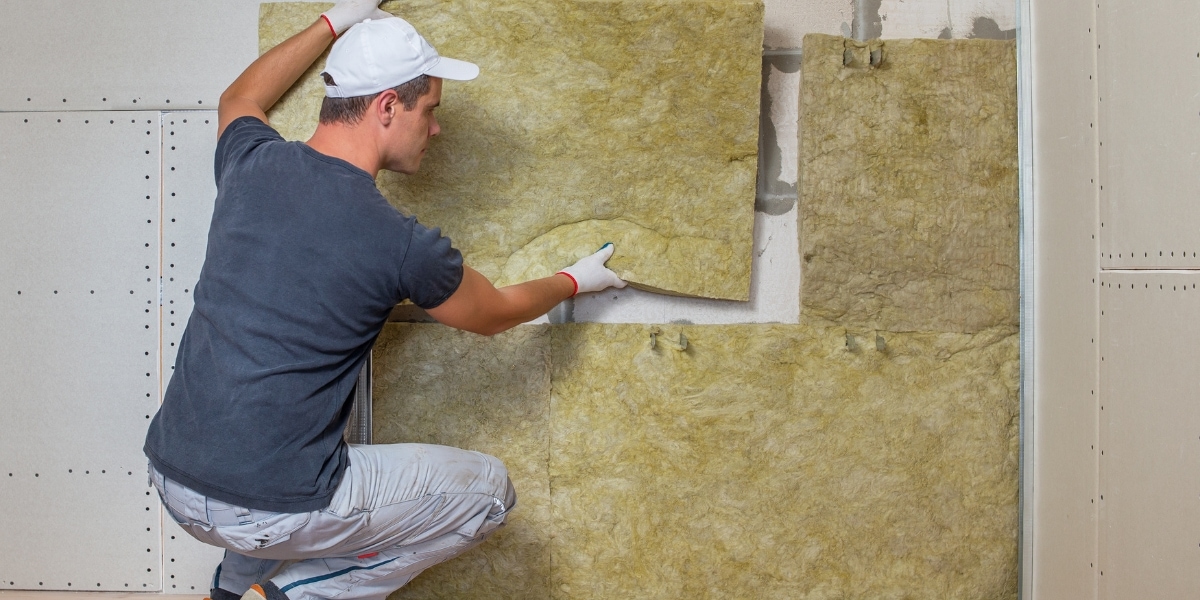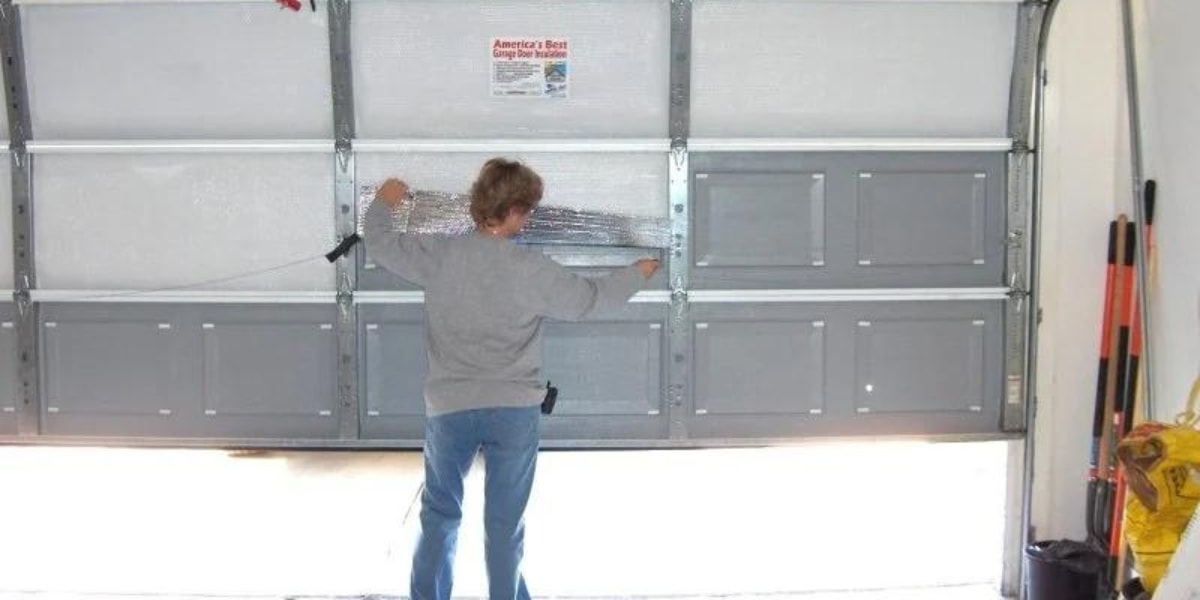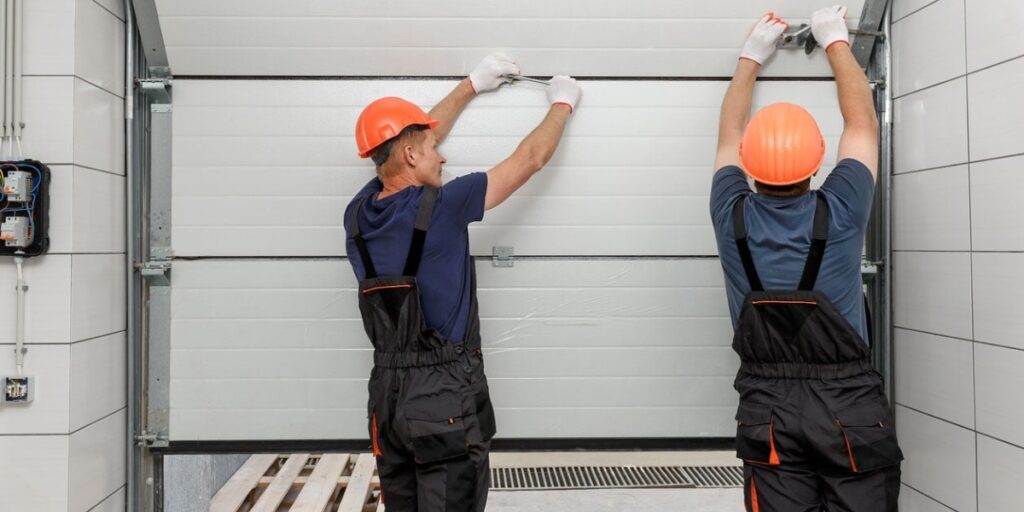Improving your garage energy efficiency can generate significant benefits beyond cost savings on your energy bills. An inefficient garage that leaks air or lacks proper insulation allows precious heated or cooled air to escape your home’s main living areas. Upgrading your garage can reduce noise, add comfort on cold winter days, and provide extra storage space without temperature fluctuations. Regular garage door maintenance and servicing of your garage door not only ensures smooth operation but also plays a crucial role in optimizing insulated garage energy efficiency, contributing to a more sustainable and cost-effective home environment.
This comprehensive guide covers all aspects of:
– Understanding energy loss areas
– Insulation types and DIY vs. professional installation
– Weatherproofing with caulking, seals, and replacements
– Ventilation and climate control methods
– LED lighting and other energy upgrades
And provides solutions tailored to different:
| Garage Types | Factors Affecting Efficiency |
| – | – |
| Attached vs. Detached | Exposure to elements |
| Under living quarters | Heat transmission |
| Workshop or living space | Usage patterns |
Follow our step-by-step instructions to start saving energy and money!
Understanding Garage Energy Efficiency
The garage often needs to be noticed regarding home energy efficiency. But your attached garage has a more significant impact than you might realize! Just think – your garage shares walls with your living spaces. So when it comes to insulation, what happens in the garage doesn’t stay in the garage.
Now, I’m not saying you should build an arctic bunker. But a few smart upgrades can save energy and money while making your garage more comfortable. Where do we start? By understanding the key areas where your garage loses heat and cold air.
Where’s the Energy Escaping?
Your home’s Energy envelope means the outer shell – walls, roof, foundation – that separates your indoor spaces from the outside elements; when there are cracks in that envelope, energy escapes.
And your garage door might as well be a giant hole in the envelope! Even attached garages have five problem areas for energy loss:
* Garage doors- Frequent opening/closing makes insulation tricky
* Walls and ceiling- Especially if under living spaces
* Floor- Concrete lets cold seep in
* Windows/vents- More holes in the envelope
* Gaps/leaks- Pesky cracks let air flow freely
Now, don’t panic. The great news? You can tackle these areas with simple upgrades to seal the envelope.
First, let’s talk about one of the most accessible places to make a difference – insulation!
Start with Insulation
Insulation does what the name promises…it insulates! By trapping hot and cold air, insulation creates a barrier between the inside and outside temperatures. Where should you add this magical barrier to your garage?
🔹 Walls and ceiling: Heat and cold quickly transfer from your garage to the bedroom above. Yikes! Insulate to create a thermal break.
🔹 Garage door: Foam panels or polyurethane spray increase efficiency by stopping drafts.
🔹 Attic above garage: Prevents melting snow from dripping into the garage.

Benefits of an Insulated Garage
I know you’re dying to jump straight into the how-to, but let’s pause for a second to appreciate why garage insulation matters in the first place. Energy savings might motivate some. But did you know insulating your garage also makes it more *enjoyable* to use? Not to mention, it increases your home’s value. Let’s dive into the key perks:
Increased Comfort
Ever walk into your garage on a freezing winter morning and want to turn right back around? That concrete feels like an ice box! Proper insulation means maintaining comfortable temps for parked cars, projects, or storage: no more icy floors or frigid tools.
And in summer? A cooler, less humid garage saves you from roasting. Insulation blocks unwanted heat absorption and moisture.
Noise Reduction
Are you tired of noisy neighbors or loud music disturbing your peace? Insulation muffles sound transmission from outside AND inside your garage. Crank your radio guilt-free while you organize the space, knowing the tunes won’t drive your family crazy.
Lower Energy Bills
Saving the obvious one for last, here is a biggie – insulation cuts HVAC costs! Avoid overworking your system by preventing hot/cold air exchange between your garage and home’s envelope. Plus, sealing air leaks directly curbs wasted Energy.
Added Resale Value
An upgraded, conditioned garage sweetens the deal for home buyers. Insulation qualifies for valuable energy efficiency tax credits and rebates in certain areas – rewards just for being energy smart!
See why insulation is about way more than just energy savings? Let’s get into how to start capturing these benefits…
A Guide to Garage Insulation
Alright, my friend! Now for the fun part: picking out insulation. There are four significant types of garage door insulation materials, each with unique pros and cons. Let’s break down your options…
Types of Garage Insulation
Here are the leading contenders:
Spray Foam
The most effective (and most expensive) option is closed-cell spray foam. This hardens into rigid insulation that seals cracks and custom-fits your unique garage layout as it’s sprayed.
Pros
🔹 High insulating value – R-6.5 per inch
🔹 Air seals while insulating
🔹 Fits around obstructions
Cons
🔸 Must be professionally installed
🔸 Costs $6-$8 per square foot
Fiberglass Batts
The batts or “blankets” of insulation you’re probably used to seeing. Available faced or unfaced.
Pros
🔹 Cheapest material – $0.75 per square foot
🔹 Easy DIY installation
Cons
🔸 Lowers R-value if gaps/compression
🔸 Can’t seal air gaps
🔸 Loose fiberglass creates a mess
Cellulose
Loose-fill cellulose from recycled paper gets blown into the garage cavities through tiny holes.
Pros
🔹 Great for DIYers – $1 to $2 per square foot
🔹 Settles into cracks nicely
Cons
🔸 Moderate insulating value
🔸 Requires a particular blowing machine
Rigid Foam
Big sheets of extruded polystyrene (XPS) rigid foam board are secured neatly to studs or joists.
Pros
🔹 Decent R-value per inch
🔹 Minimal expansion/contraction
Cons
🔸 Multiple seams lower performance
🔸 Costs $1 to $2 per square foot
Now that you know the lineup, where specifically should you install insulation in your garage?
Prime Insulation Locations
Remember, we want to seal the entire “shell” or envelope surrounding your garage to prevent air exchange.
The main targets are:
Garage Door
– Foam panels or spray foam increase efficiency.
– Go for at least R-10 insulation.
– Upgrade old wooden doors to maintain temperature separation.
Walls & Ceiling
– Essential rooms above the garage.
– Seal off living spaces.
– Match insulation value used elsewhere in the home exterior.
Attic Above Garage
– Prevents melting snow from dripping into the garage.
– Blown cellulose or batts work well here.
Insulate any border walls adjoining living areas for maximum return on investment before tackling stand-alone garage walls. Prevent that direct energy transfer first!
We covered the what, where, and why – now for the how. Let’s discuss your installation options…

DIY vs. Professional Installation
Tackling insulation solo can be tempting for the hands-on crowd. But is it the best option for *your* garage? Ask yourself:
1. How complex is my project?
Consider layout, accessibility, electrical, etc. Be realistic about the skill level needed!
2. What’s my budget for this?
DIY is cheaper in materials only – time is money! Factor learning curve/tools.
3. What’s my timeline?
A pro knocks the project out quickly – better for short windows.
Weatherproofing Your Garage
So you’ve got shiny new insulation keeping temps comfy. High five! But we still need to transform your garage into a perfectly climate-controlled oasis.
Insulation stops heat flow through cracks, not airflow. We still have to seal the air leaks, allowing inside and outside air to mingle where they don’t belong!
Let me explain garage weatherproofing in a little more detail…
Caulking & Sealing
The goal is to seal every last crack and gap that compromises your garage’s insulation barrier. Think window frames, wiring holes, plumbing penetrations, etc.
Arm yourself with caulk and spray foam sealant to seal meticulously:
* Perimeter gaps where exterior walls meet concrete slab
* Openings around pipes, wires, vents, and fans
* Bottom edges of drywall or siding materials
* Seams between wall/ceiling drywall sheets
Picture a fortress against drafts, fumes, moisture, pests, and debris. Nothing gets in or out without your permission!
New Doors & Windows
While sealing improvements go a long way, worn or damaged doors/windows still expose significant gaps.
Upgrading to modern garage doors and Energy efficient windows renews your weatherproofing:
* Insulated, thermal-broken metal or fiberglass garage doors
* Double-pane glass windows with weatherstripping
Bonus points for impact-resistant models in hurricane zones!
Weatherstripping
Pay attention to those moving parts, too. Weatherstripping seals gaps around doors and windows that open/close.
Materials like vinyl, foam, felt, or rubber strips are installed easily to block air leaks. Upgrade worn strips around:
* Garage access doors
* Garage to house doors
* Windows
Refreshing weatherstripping makes a massive difference in preventing air exchange!
Climate Control & Ventilation
We’re getting so close now to garage nirvana! These are just a few final pieces of the energy efficiency puzzle. I’m talking about climate control upgrades and proper ventilation.
You’re probably picturing expensive cooling and heating systems. But do not worry – I’ll first give low-budget-friendly strategies to regulate garage temperature and humidity. We can chat condenser units if needed after optimizing more straightforward fixes!
Low-Cost Climate Control Tricks
First up, ventilation strategies to exhaust hot/humid air:
* Roof vents- best for releasing trapped heat
* Gable vents- helps air circulation flow
* Exhaust fans- mounts in walls or ceilings
For direct temperature help:
* Portable space heaters- efficient models that heat only occupied areas
* Radiant floor heating- warms concrete slab from below to melt ice
Dehumidifiers also control problematic moisture and condensation.
Insulating Garage Doors
We’ve mentioned garage door insulation a few times now. Where should you target your efforts here?
* Replace solid doors with insulated steel or fiberglass
* Add detachable polystyrene foam panels
* Spray urethane foam fills uneven surfaces nicely
Sealing the moving “hole” in your shell goes a long way!
When to Add HVAC?
If budget isn’t a concern and precise climate control is needed for workshop projects or storage, installing a condenser with ductwork or mini-splits may suit your garage.
Key factors:
* Detached vs attached (conditioned air could escape)
* Local climate extremes
* Plumbing/electrical capacity
This lets you fully customize temperature and humidity year-round.
But start small before shelling out thousands! Now, then, have I earned a lunch break? We could sip lemonade in your new weatherproofed oasis…
VI. Usage & Lifestyle Considerations
Our garage efficiency guidance will only mean a little if I know how *you* use your space! Let’s chat about garage lifestyle factors because insulation strategies shift slightly, whether storage vs. workspace vs. party zone.
Parking Habits
Does your garage shelter vehicles daily, or is it mostly overflow storage? The frequency of opening/closing the significant door matters! We guard storage spaces differently.
Workshop Zone
Lots of time, were they working on vehicle repairs or wood projects? You want stable heat/AC, fume ventilation, and good lighting – treat it like a conditioned indoor space!
Living Space Garage
Uh oh, are the kids commandeering your garage as a gaming hangout? Or is part of it converted to an in-law suite? In that case, prioritize insulation on shared walls, efficient lighting, and secure heating/cooling!
Located Under Bedrooms
Pay special attention to the shared ceiling. Add insulation to reduce noise transfer upstairs at night when garage activities resume. Warm rooms above also impact garage temperature.
Flooring Solutions
Coat concrete with durable and insulating epoxy or rubber floor systems, depending on use. Turning the floor into a thermal barrier helps!
Do you have questions about your unique situation? I’m all ears! Optimizing your garage requires custom strategies tailored to *your* needs. What would you like to use the space for?
Garage Energy Efficiency Upgrades
Wow, did you make it all the way here? Gold star, friend! Just a few more juicy upgrades to complete your energy-optimizing mission. We’re talking advanced improvements like lighting, sensors, insulated openers, and renewable solar power in the garage. Let’s dive in!
I bet you never considered your garage lighting had anything to do with energy efficiency. Oh, but it does! Lighting alone consumes 5-10% of electricity in the average home. The garage tends to house outdated, inefficient bulbs we tolerate. No more!
LED Garage Lighting
Swapping traditional incandescent or fluorescent bulbs for LEDs saves lighting costs. *And* LEDs last 25 times longer than incandescent bulbs. That’s over a decade of garage illumination!
Benefits:
* Use 75% less energy than incandescents
* Save $75+ per year by cutting energy waste
* Choose color temperature optimizing garage use
Skylights or solar tubes are another natural lighting option if feasible. Locate fixtures appropriately to avoid glare while working.
Occupancy Sensors
These handy devices automatically click lights on when motion is detected in the garage, then off again after a delay when no movement registers. No more manually flipping switches!
* Mount ceiling or wall-mounted sensors
* Adjust sensitivity to ignore pets/rodents
* Set shutoff delay from 30 seconds to 30 minutes
I am saving wasted electricity when absent. Genius.
Insulated Garage Door Opener
Did you know many older openers lack “standby” mode? Newer models enter low-power standby when not active. Another considerable efficiency add!
What to Look For:
* Insulated steel panel door
* At least 1⁄2 horsepower motor
* Automatic lighting
* Battery backup
Treat yourself to a modern, WiFi-enabled opener for lighting scenes and voice-activated entry.
Solar Powe
The ultimate energy play – solar panels! Sunlight fuels electricity, heat, and even EV charging. And don’t worry about winter storms; they generate power with snow cover.
Consider solar if:
* Sun exposure: south/west optimal
* Roof angles face the sun
* Limited shade from trees
Go big with a system tied to your home’s electrical. Or start small, just powering garage lights. Every renewable bit counts!
FAQs: Your Garage Insulation Questions, Answered!
Why should I insulate my garage?
Good question! Insulating your garage keeps temperatures comfy for parking cars, projects, or storage. This protects your vehicles, tools, and items in long-term storage from temperature swings. Bonus – it also reduces noise!
What insulation material works best?
It depends! For garage walls, I’d recommend fiberglass batts or rigid foam boards. For the ceiling, blow-in cellulose is great. And for the garage door itself, foam panels provide excellent efficiency.
Is it easy to install insulation DIY?
Parts of the project are suitable for the handy homeowner! Installing batts or foam boards on walls is very DIY-friendly. I’d recommend hiring a pro for the trickier garage door insulation.
How much money could I save annually?
Expect to save 10-30% on HVAC costs after sealing air leaks and adding insulation to your garage’s thermal envelope! Plus, you’ll get perks like noise reduction and added comfort and storage potential.
Can I finish and heat/cool my garage once it is insulated?
Absolutely! An insulated, weatherproofed garage is the perfect blank canvas to finish into a workshop, bonus living space, etc. Add drywall, flooring, lighting fixtures, and even a mini-split HVAC system if you’d like after updating the energy efficiency. Go wild with your conditioned garage!
Have any other questions come to mind about optimizing your garage? Fire away, my friend!
Conclusion
Yes! We made it to the finish line with a fully optimized garage. Could you give me a high-five, insulation pro?
Getting your garage insulation and efficiency game plan mapped out was almost as fun as the makeover itself will be.
Now that you’re armed with insider knowledge on materials, DIY installation, pros, budget savings, and even decorating your conditioned space – who’s feeling pumped to get

